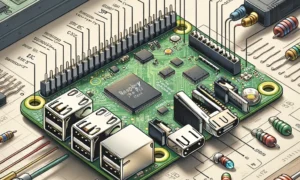The electric vehicle (EV) market is experiencing a significant transformation with the introduction of a revolutionary battery technology that doubles the driving range of EVs. This breakthrough addresses one of the most critical challenges faced by the EV industry—range anxiety—while promoting the adoption of sustainable transportation solutions. With this new battery technology, the future of electric mobility looks brighter and more promising than ever.
The Evolution of Electric Vehicle Batteries
Battery technology is at the heart of the electric vehicle revolution. Over the years, advancements in lithium-ion batteries have enabled EVs to become more competitive with traditional internal combustion engine vehicles. However, limitations in range and long charging times have remained significant barriers to widespread adoption. The latest breakthrough in battery technology aims to overcome these challenges by offering extended range and faster charging capabilities.
How the New Battery Technology Works
The new battery technology leverages advanced materials and innovative engineering to achieve its impressive performance. Key features include:
- High Energy Density: The new batteries have a much higher energy density compared to conventional lithium-ion batteries, allowing them to store more energy in the same amount of space.
- Fast Charging: Enhanced charging protocols enable these batteries to charge at a much faster rate, reducing the time required to recharge the vehicle.
- Longer Lifespan: Improved battery chemistry ensures a longer lifespan, making the investment in an electric vehicle more economically viable for consumers.
- Safety Enhancements: Advanced thermal management systems and robust safety features reduce the risk of overheating and other potential hazards.
Impacts on the Electric Vehicle Market
- Extended Range: The most significant benefit of the new battery technology is the doubling of the driving range. This means that EVs equipped with these batteries can travel much farther on a single charge, significantly reducing range anxiety and making long-distance travel more feasible.
- Increased Adoption: With the extended range and faster charging times, more consumers are likely to consider switching to electric vehicles, accelerating the transition to sustainable transportation.
- Economic Benefits: The longer lifespan and improved efficiency of these batteries can lower the total cost of ownership for electric vehicles, making them more attractive to a broader audience.
- Environmental Impact: As electric vehicles become more accessible and widely adopted, the reduction in greenhouse gas emissions and dependence on fossil fuels will contribute to a cleaner and healthier environment.
Real-World Applications and Case Studies
Several automakers and battery manufacturers are already integrating this new battery technology into their upcoming models. For instance, a leading EV manufacturer has announced plans to release a new model equipped with these batteries, boasting a range of over 600 miles on a single charge. Additionally, pilot programs in various cities are testing the deployment of electric buses with the new battery technology, demonstrating significant improvements in operational efficiency and range.
Future Prospects and Innovations
The development of this new battery technology is just the beginning. Ongoing research and collaboration between scientists, engineers, and manufacturers are expected to yield even more advancements. Potential future innovations include:
- Solid-State Batteries: Offering even higher energy densities and improved safety features, solid-state batteries are seen as the next major leap in EV battery technology.
- Wireless Charging: Integrating wireless charging infrastructure into roads and parking spaces could further enhance the convenience and appeal of electric vehicles.
- Recycling and Sustainability: Efforts to improve battery recycling processes and develop sustainable sourcing of materials will ensure the environmental benefits of electric vehicles are maximized.
Conclusion
The introduction of a new battery technology that doubles the range of electric vehicles marks a pivotal moment in the evolution of sustainable transportation. This advancement not only addresses key challenges faced by the EV industry but also paves the way for broader adoption and a cleaner, greener future. As we continue to innovate and improve upon these technologies, the dream of a world powered by electric vehicles is becoming an exciting reality.


































